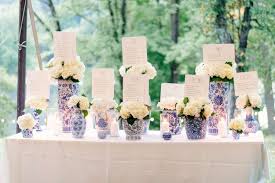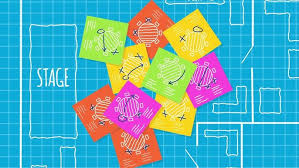Table of Contents
Introduction to Event Seat Color Coding
A factor that could change the format of the arrangement when it comes to organizing an event organizer seat color coding ideas is a seating plan. Arranging seats for all guests in an event can be tiring and complex. However, color coding the seat arrangement would add a new dimension and remove the complexities. Such concepts are exciting and relieve the burden of seat arrangements; color coding does just that.
Imagine having a multi-colored ballroom where guests would walk in and be able to love all the themes incorporated in various sections of the ballroom. This entire section not only adds to the event’s appeal but stems from principles of psychology, which makes it practical. Not only does this concept apply to private corporate events or weddings but also to community events where segregation by use of colors can enhance the overall vibe of the event.
Wouldn’t you want to know how such a simple yet effective technique can help you stand out in the eyes of your audience? Let’s explore the psychological aspects of various colors and see some interesting ways to implement a seat color-coding scheme in your next event!
The Psychology of Color and Its Impact on Attendees
Different colors have a strong effect on emotions. They can even encourage joy, peace, or even a need for action. Knowing this type of psychology is beneficial for event organizers.
For example, blue generates trust and peace and is good for conferences. Bright colors like yellow encourage creativity and enthusiasm and are ideal for workshops or team-building events.
In contrast, red stimulates the mind but may cause nervousness if overused. Using it as an accent color is ideal to emphasize a needed area so that attendees are not harmed.
Given the proper colors, the atmosphere can be felt even though guests have yet to enter the place. The selections of colors are more than just for decoration; rather, they alter the attendee’s experience upon their arrival. Such a tactic enhances the environment rather than just decoration, as all the aesthetics are presented to create a tantalizing atmosphere that will linger in the audience’s mind long after the event ends.
Different Color Coding Ideas for Various Types of Events
When you are organizing your event, keep in mind how color coding can elevate that experience. For example, colors can differentiate between subjects or panel sessions in a business conference. Participants will automatically know where to go as if instinctively.
There is a chance to be creative at a wedding. Giving color codes to family groups or themes like ‘summer’ and ‘winter’ has been suggested. This assists the visitors in locating their place and also makes the event more classy.
Different colors can also divide sections for outdoor basil- e.g., red for the food area and blue for the performance area. This helps to encourage adventure and makes walking around entertaining.
In schools, color coding according to the grades and the subjects enhances a sense of unity among students and their parents.
Sports events can utilize team colors in the allocation of seats to promote mixing; this way, fans will enjoy the atmosphere created.
No matter the event, whether formal or the opposite, the combination of careful planning and color coding for the seating plan can set a certain feel for the occasion and guarantee increasing engagement at any togetherness.
Creative Ways to Incorporate Color Coding in Event Seating Plans

With the help of color coding, one’s imaginative potential is further unlocked with event seating plans. You might consider making themed zones according to color palettes that highlight your event’s branding. For instance, if your event type is a corporate gala, different shades of blue can represent the VIP areas, and green would show networking areas.
Another interesting activity would be the use of lanyards or wristbands for employees and guests attending the event. This enhances the event’s aesthetics while allowing the attendees to locate their respective areas.
You may extend the idea a little and use different colors to signify different activities throughout your event, i.e., using one color for workshops and another for panel discussions.
Interactive elements can also be compelling; for instance, ask your guests to vote for any color they like as a registration requirement, which will later be used in the seating plan; such engagement builds on around the layout itself.
Tips for Choosing the Right Colors for Your Event
It would help to take care of a few things when choosing colors. One thing is the theme. For example, a business meeting would use duller screes, while a wedding would surely have brighter colors.
Writing about the first rule, I wish to say that it is also necessary to be aware of one’s audience. The color of the target group of people also causes the effect. For example, if the participants are quite young, one can find a lot of their bold, bright colors. Older people, however, might be more comfortable with standard colors.
The surrounding colors matter, too. The color of the other walls would also have a striking effect on how the new colors would be handled. Given the lighting and decor, it is best to test different color swatches to see how they look.
Make sure you think through how the texture will affect the emotions you are trying to create with your event. Blue would make for a calm mood with a lot of attention to the red color’s blend, which would stimulate the audience. Concentrate on choices that will help you achieve your event’s needs and visualize the desired outcome without going overboard with colors.
Case Studies: Successful Implementation of Seat Color Coding
In the beginning, let’s look at one interesting case alleged to have revolved around a sizeable music festival in which they assigned certain sections of the audience specific seat colors. The organizers assigned colors to their VIP areas and general public and family seating. This quite simple plan assisted the attendees in a better way of knowing where they could sit and enhanced the surrounding aesthetics.
While describing them, for example, at a corporate conference I attended, the hosts resorted to a pre-arranged color template that specified the seating according to an attending role. For example, one color would separate the speakers from the national fund managers and the general participants. This enhanced the networking possibilities and created networks among the pertinent categories.
Let us also cite another example of the art exhibition where attendees were allocated separate seats according to individual themes drawn by the paintings and the characteristics of the attendees. The attendees sat on the themes they favored, which created a buzz around the official event with various debates and interactions.
From the above examples, it is evident that a set pattern of considering seat color coding can elevate an average seat arrangement into a jaw-dropping experience and ensure that the audience gets involved more in the event.
Conclusion: Enhance Your Events with Innovative Seat Color Coding Strategies
Transforming any gathering into a more entertaining and beautiful addition can be made easier with event organizer seat color-coding ideas. Every group possesses a certain color combination and associated emotions; manipulating color combinations may elicit an appropriate feeling from their target audience. Different events demand different things, but selecting the right colors to represent these themes is important.
So, subconsciously incorporating these colors within unexpected areas would enable your sponsor’s attendees to navigate easily around the regions. Consider your brand’s identity while selecting shades; this way, there will be no conflict of interest concerning certain aspects of your event.
Sponsorship case studies revealed new ways of enhancing guests’ experiences through relationships enabled or strengthened by the same color code throughout the event. Well, this is one of the radical proposals for the task, but I think there are enough resources to implement it properly.
You aim to move away from the ordinary seating color code strategies every event uses and strive for more creative approaches highlighting your events. Next time, when you’re tasked with arranging the event, think differently instead of using a singular fixed seating arrangement. Events should be full of creativity, so let go of the last simple color codes and see how colors can change the organization of the events you plan to do.
FAQs:
What are event organizer seat color coding ideas?
They are strategies to arrange event seating using color themes to enhance organization and aesthetics.
Why should event organizers use seat color-coding ideas?
It simplifies seating plans, improves navigation, and creates a visually appealing atmosphere for attendees.
How can event organizer seat color coding ideas enhance corporate events?
Colors designate roles or sections, such as VIP areas or networking zones, promoting order and interaction.
What colors work best for weddings in seat color coding ideas?
Bright colors like pastel pinks and gold add elegance and help guide guests to their designated areas.
Can event organizer seat color coding ideas be used for outdoor events?
Colors can mark zones like food areas, activity spots, and seating sections for better event flow.
How do event organizer seat color coding ideas impact attendees emotionally?
Colors like blue promote calm, while yellow sparks creativity, enhancing the event’s overall mood.
What tools can help implement event organizer seat color coding ideas?
Allocate seats according to areas using different colored elbow patches or lanyards.
Are event organizer seat color coding ideas cost-effective?
Yes, they often require minimal resources while significantly enhancing the event’s organization and ambiance.
How can event organizer seat color coding ideas improve branding?
Matching seat colors with your palette reinforces brand identity and creates a cohesive experience.
What are some creative event organizer seat color-coding ideas?
Assign colors to themed zones, incorporate interactive voting for colors, or align colors with event activities.
